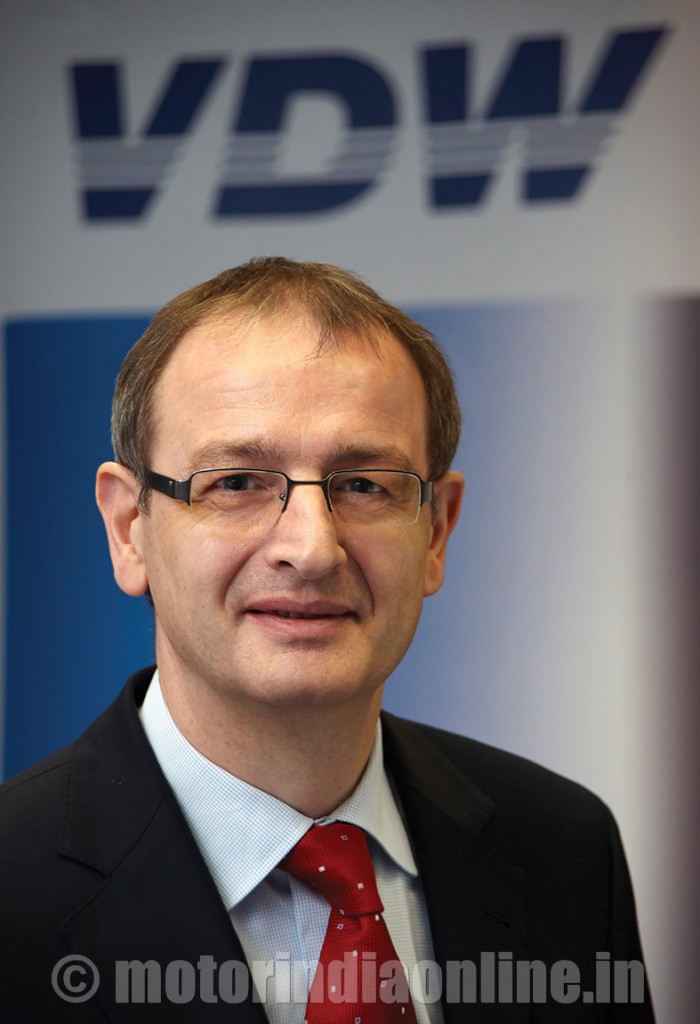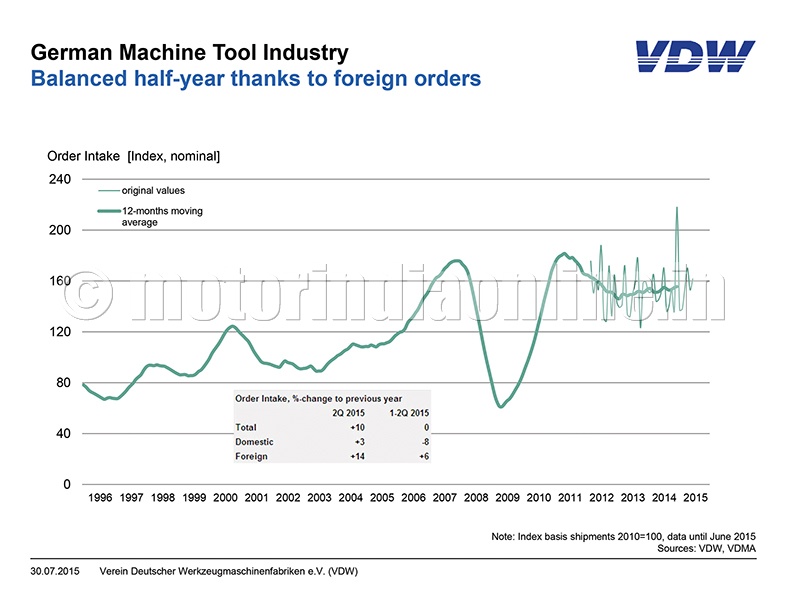Orders received by the German machine tool industry in the second quarter of 2015 were 10 per cent up on the previous year’s figure. Domestic orders were three per cent higher, while overseas demand grew by 14 per cent. There was six per cent growth in orders from the euro zone and a 16 per cent increase from non-euro countries.

Compared to the previous year, incoming orders stagnated in the first half of 2015, while domestic orders fell by eight per cent and foreign demand rose by six per cent.
“After a decline in the first quarter of 2015, orders recovered again in the second quarter. This means that the German machine tool industry has presented a balanced half-year balance sheet,” said Dr. Wilfried Schäfer, Executive Director of the VDW, the German Machine Tool Builders’ Association. This is mainly due to the significant increase in demand from abroad. Domestic business continues at a satisfactory level despite percentage cuts triggered mainly by the base effect of strong figures in the equivalent period last year. The main driver of growth in the second quarter was the non-euro zone. Asia where China posted a slight increase in business, strong orders were received from South Korea, and the ASEAN region performed positively overall. This was a major factor in maintaining order levels. The US, however, has been disappointing so far.
Relative to the first half of 2015 the euro countries posted a double-digit growth in orders, providing a greater boost. This is largely due to the strong industrial demand from Spain and Italy which are returning to growth thanks to investment incentives. The development in France is striking. The politically motivated support for the modernization of production equipment is also likely to provide for buoyancy there.
Sales remained the same or were slightly up in the first half. “Achieving the three per cent increase which was forecast for 2015 now appears somewhat ambitious,” said Wilfried Schäfer. This would be dependent upon an increase in demand in the second half of the year, particularly with regard to domestic orders.
German industry should remain in good shape because large groups of customers are export-oriented and should benefit from the increased price competitiveness, thanks to the weak euro. Confounding analysts’ expectations, the IFO business climate index recovered in July following two falls. “The temporary relaxation in the Greece situation is boosting sentiment in the German economy,” explained Schäfer.
Employment remains high. This is an indication that the German machine tool builders are in good shape for the future despite the cyclical swings. “The industry is strong and is investing in qualified staff,” emphasised Schäfer.
In May 2015 almost 72,800 people were employed in the machine tool industry, an increase of 2.3 per cent year-on-year.
